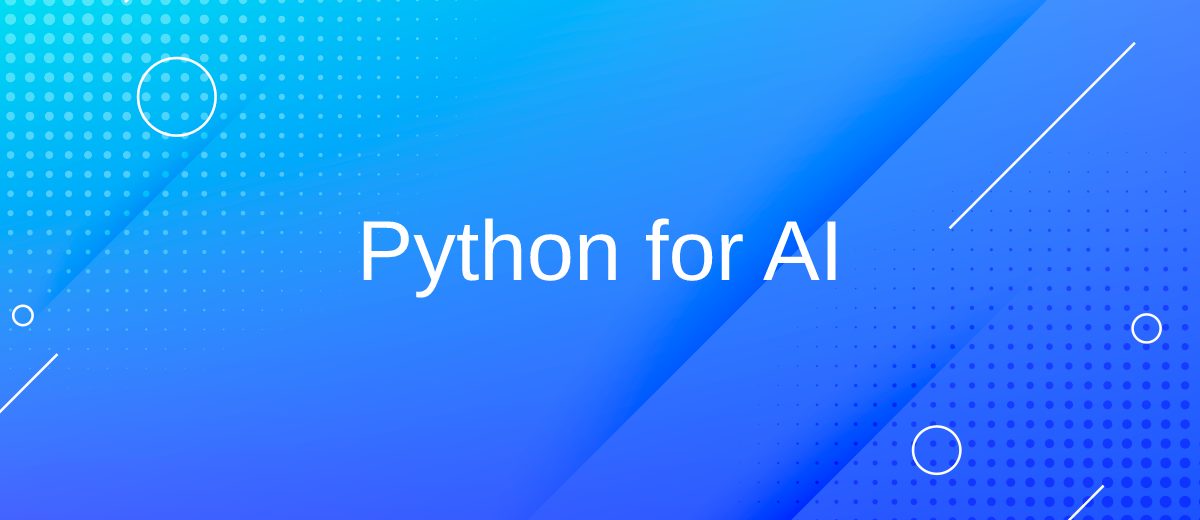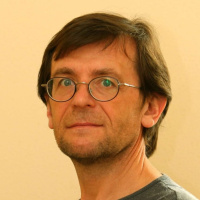Python for AI Development – Why is it so Important
Artificial intelligence and closely related technologies like various machine learning algorithms have become top topics for discussion. Both among specialists and in society as a whole. Much of this media boom, however, is dedicated to either a single spectacular achievement or the promise and threat that these technologies can create.
Written in an accessible form, explanations of how artificial intelligence technologies are created are less common. We'll try to do my part to improve the situation.
We tell you why the Python programming language has become an important tool in the creation of artificial intelligence, why use Python for AI.
Just interesting facts
First, some general information and interesting facts about the language and its creator.
- The creator of the Python language is the Dutch programmer Guido van Rossum. The beginning of work on such a popular language in our time began quite by accident. "In December 1989, I was thinking about what to do for the Christmas holidays. The office was closed. Therefore, I began to refine the ABC language at home. Throughout the work, I did not even imagine that something else serious could come from this", recalled later Guido.
- The name of the language has nothing to do with reptiles. Guido van Rossum named his creation in honor of the series Monty Python's Flying Circus. In addition, the name fits into the tradition of naming a programming language after prominent personalities.
- When creating Python, van Rossum was guided by the rules that subsequently significantly influenced the software industry. He was and remains a supporter of open source, used simplified English (a foreign programmer can not waste time improving his English). Finally, van Rossum strove for code brevity and ease of use.
- There is a set of 19 sayings that reflect the spirit of the language – Zen of Python. It is hosted on the official Python website. Zen of Python also opens in a Python console application when you type import this.
- In 2015, Python became the most popular language taught in primary schools in the UK. Six out of 10 parents surveyed preferred their children to learn Python over French.
- Python is one of several programming languages declared as the official language of Google due to its efficiency.
- Google users make Python searches more often than for people like Kim Kardashian, Donald Trump, or Tom Cruise.

Areas of use of the Python language
Since the distant 1989, Python has found particular distribution in three areas:
- web development;
- processing of large data arrays (Big Data), machine learning, data analysis and visualization;
- creation of automation scripts.
We will briefly describe the role of the Python language in each of them.
Let's start with web programming. Python allows you to make the entire backend of an Internet resource. Let me remind you that the backend is an internal component of the Internet resource. It is a database stored on a remote server computer. At the request of the user, information from such a database is retrieved and entered into the browser on his computer. And here the information received is processed by the second component of the site - the frontend.
Web developers have taken a liking to Python thanks to the Django and Flask frameworks written in this language. A framework is a software shell (more precisely, a framework) that simplifies and speeds up the solution of common tasks.
So, such resources as Instagram, Disqus, Mozilla, The Washington Times, Pinterest are created on Django. The Flask framework is used by such eminent resources as LinkedIn, Netflix, Uber.
Also, the use of Python showed itself well when writing parsers - programs for collecting and organizing information posted on sites.
Another area where the Python language turned out to be in demand is scripts for automating routine processes. A script is a short program containing a sequence of certain actions. A good example of a script is macros in the Google Sheets service, which I already talked about in more detail in one of my posts.
Another example of using the script is processing e-mails.
- Automate the work of an online store or landing
- Empower through integration
- Don't spend money on programmers and integrators
- Save time by automating routine tasks
An example is an email processing system. To collect statistics and further analyze the data, you need to count incoming letters, sort them by keywords. Even a beginner can easily write a simple script that will perform these actions on its own.
Finally, let's move on to the main topic of this post.
Why Python is important in AI. Python AI libraries
We have already said above that one of the areas where this programming language is in great demand is machine learning. To make the relationship between this technology and artificial intelligence clearer, we will give an analogy from my post devoted directly to machine learning and neural networks. As the demand for AI applications continues to grow, Python has emerged as the go-to language for developers. This is why the Python development team has been working tirelessly to improve the language's capabilities and keep up with the latest trends in AI development.
The mentioned technologies interact very closely with artificial intelligence, neural networks and deep learning. But what is a subset of what?
In Chinese art, there is such a spectacular artifact as the “Canton ball”. It is a carved ivory sphere, inside of which are several more spheres. Moreover, each freely rotates with respect to its neighbors.
Let's arrange the discussed technologies in the following order: artificial intelligence -> machine learning -> neural networks -> deep learning.
The outer sphere of such an imaginary Cantonese ball will be artificial intelligence. Each subsequent technology in our list is, as it were, nested in the previous one. So, machine learning is a subset of artificial intelligence. Deep learning is a part of machine learning and neural networks are the basis for deep learning algorithms.
Therefore, artificial intelligence is inextricably linked to machine learning. And progress in the field of AI is very dependent on the availability of convenient and powerful programming tools.
So, Python has in its arsenal the best support for machine learning among all programming languages. This "miracle weapon" was the ai libraries TensorFlow, Keras, Scikit-learn created specifically for machine learning.

By tradition, along the way I will explain the meaning of the term. A library is a set of functions that allow you to solve a specific task in a program. The library saves the programmer from repeated "reinventing the wheel", that is, writing code for routine, repetitive tasks. For example, the most common learning algorithms are already built into Scikit-learn.
The following fact speaks about the role that the Python language plays in the development of artificial intelligence. According to Google Trends, in 2016 there was a sharp jump in interest in the subject of machine learning around the world and, in fact, in the Python language. This phenomenon manifested itself a year after the release of the TensorFlow machine learning library.
What else affects the demand for this tool in the field of AI in addition to the described, purely specific features?
The Python programming language is endowed with a simple and clear syntax (a set of rules that determines which arrangement of characters creates a correct expression). A large community of programmers has formed around it, developing and popularizing the language. That is, on the one hand, progress requires the use of AI in all spheres of life, on the other hand, there are a fairly large number of specialists who can solve these problems using the Python language.
Summing up. Why is Python good for AI
Artificial intelligence has become an area of almost exclusive use of the Python programming language literally in the last 5-10 years. Although the language itself appeared in the last century. A combination of several factors contributed to this development:
- for the development of civilization, it became necessary to process and analyze huge amounts of data. Without machine learning and artificial intelligence technologies, it is impossible to answer this challenge;
- It was at this time that the Python programming language acquired all the necessary tools for solving problems in the field of AI;
- accessibility in learning and ease of use contributed to the popularity of this language among programmers. And formed a whole army of people who are ready to work in the field of AI.
All these factors, which have resonated in recent years, have made the Python language and artificial intelligence technologies almost inseparable concepts in the perception of society.
Do you want to achieve your goals in business, career and life faster and better? Do it with ApiX-Drive – a tool that will remove a significant part of the routine from workflows and free up additional time to achieve your goals. Test the capabilities of Apix-Drive for free – see for yourself the effectiveness of the tool.


